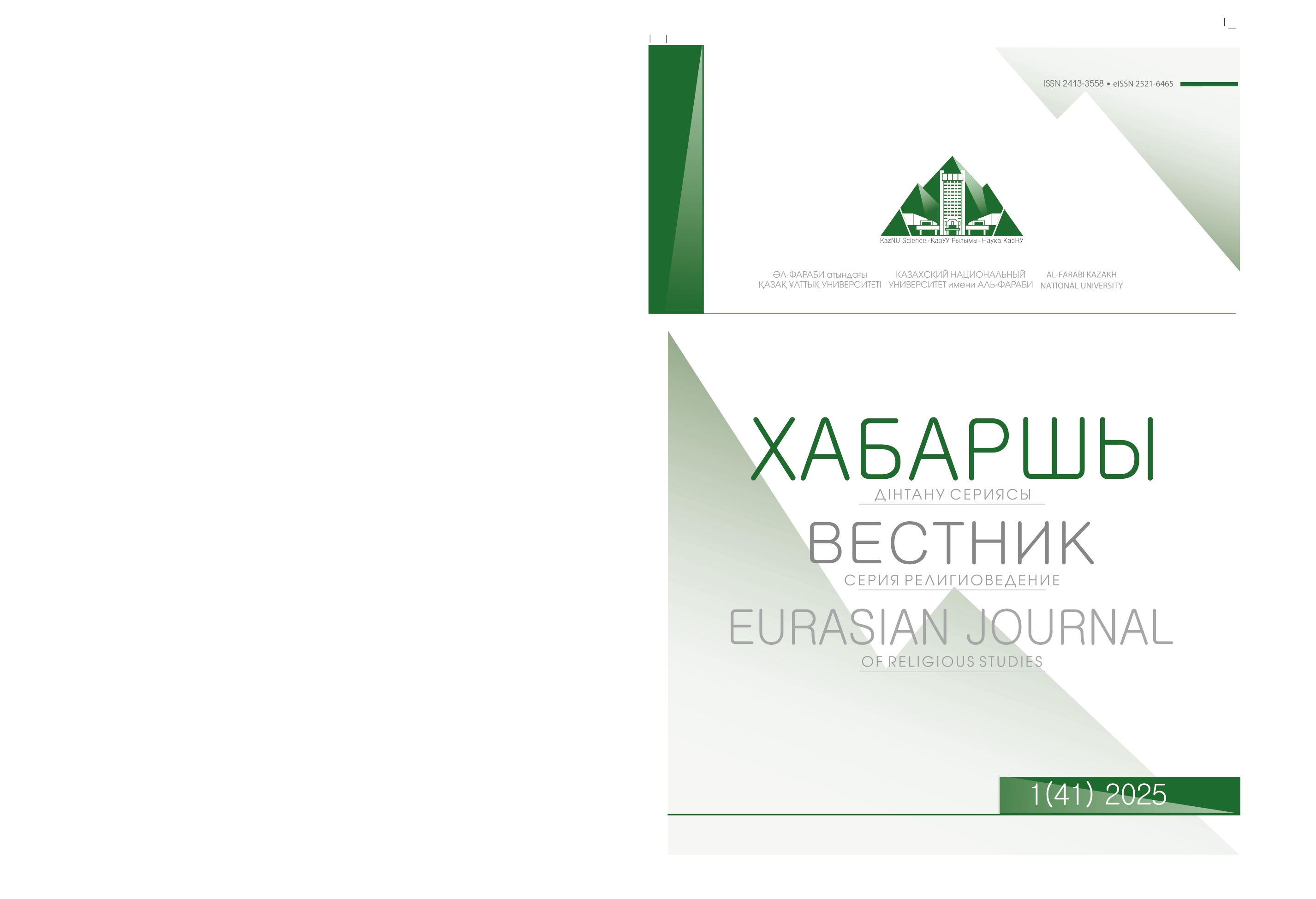Psychosocial characteristics of men and women visiting holy places (using the example of holy places in Southern Kazakhstan)
DOI:
https://doi.org/10.26577//EJRS20254119Abstract
The work examines psychosocial differences between men and women making pilgrimages to holy places, using the example of holy places in South Kazakhstan. The study aimed to identify the beliefs, psychological factors and characteristics underlying the visit to sacred sites. The main directions of scientific research are religious studies and psychosocial research. The study’s primary purpose is to conduct a comprehensive, scientifically based analysis of the psychosocial characteristics of people visiting sacred places and mausoleums and discover their place in society. Therefore, the article examines the social characteristics of pilgrims, the frequency of visits to holy places, their purposes, background and factors influencing them. Attention is also paid to the gender characteristics of people visiting holy places, examining which men and women visit holy places more frequently, for what purposes and under what circumstances. The research was conducted at the 17 most visited sacred sites in South Kazakhstan. The research utilised scientific methods such as surveys, observations and interviews. The data were statistically analysed using SPSS 21.0 (Statistical Package for Social Sciences) software. The study demonstrated the psychosocial characteristics of men and women visiting holy places. The study revealed that female pilgrims visit holy places more frequently and, when necessary, fulfil their religious needs that are lacking in traditional religious rituals and that the prayers and wishes said at holy places differ according to the gender of the visitors. The fact that this topic is still insufficiently studied from a psychosocial point of view in domestic religious studies shows the value of the work.
Keywords: Religion, Mausoleum, Pilgrimage, Man, Woman




